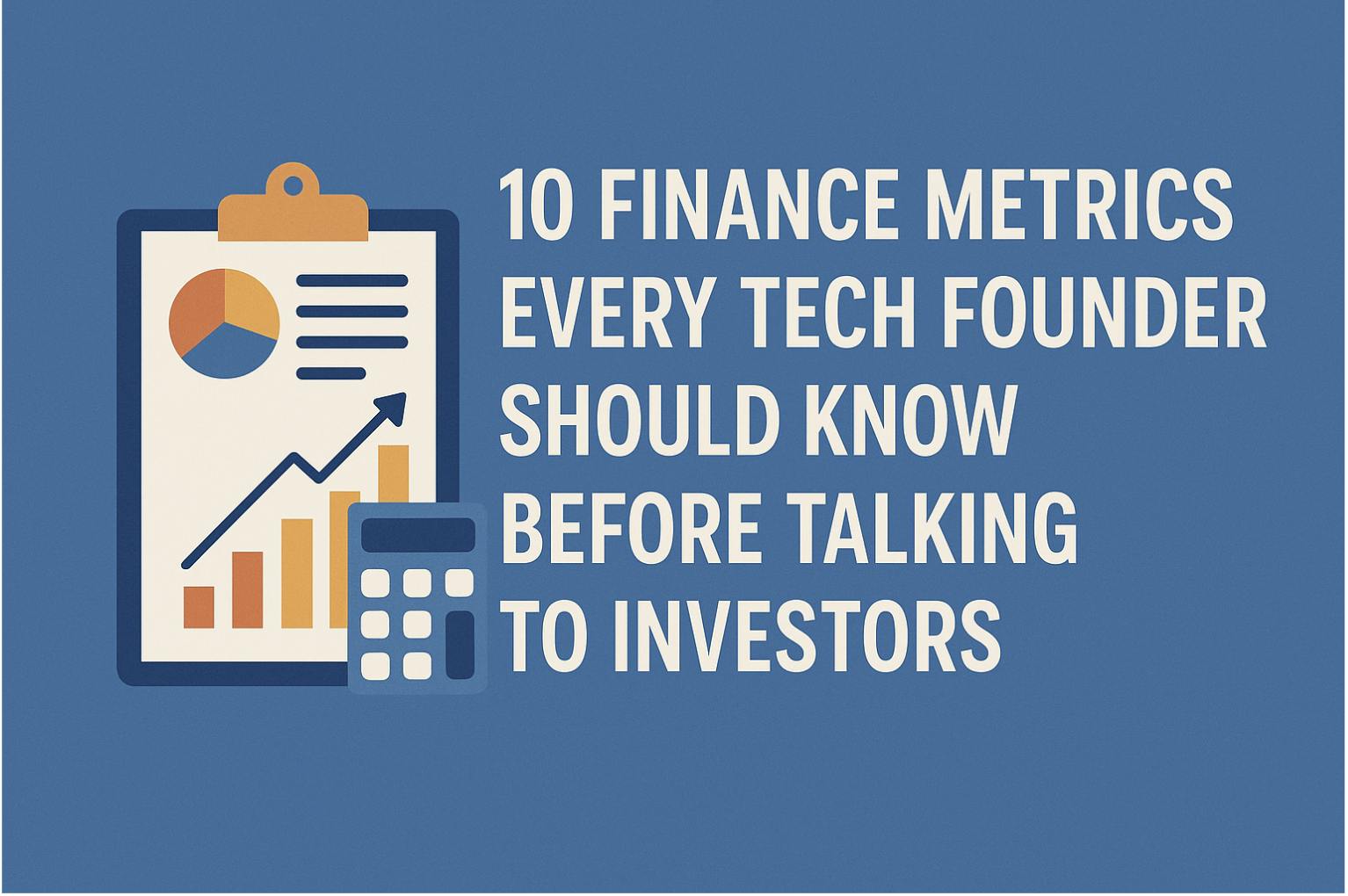If you’re building something worth pitching—something more than a glorified hobby with a login screen—you need to know your numbers. Not “I’ll get back to you” know them. I mean know them like you know your co-founder’s coffee order.
I’ve worked inside innovation teams at one of the world’s largest financial institutions. And I’ve watched too many founders—smart, legit, ambitious—get ghosted by investors simply because they couldn’t walk through their unit economics.
It’s not personal. It’s math.
So here it is:
10 numbers that’ll either carry your pitch or quietly kill it—explained like a real person would, with examples, and zero BS.
Burn Rate
How fast are you lighting your cash on fire???
If you’re spending $80K a month to keep the lights on (payroll, AWS, your workspace snacks), and you’ve got $400K in the bank… that’s 5 months of oxygen. Not 6. Not “depends.” Five. And that’s if you don’t hire your cousin as Head of Product Strategy.
Real talk: Investors want to know when the plane runs out of fuel—before they board.
CAC (Customer Acquisition Cost)
How much does it cost to convince someone to pay you???
You spend $10K on ads, content, and cold outreach. That brings you 100 paying users. Your CAC = $100. Great!!!
Now ask:
Are you selling a product for $20 one time? Or $100 per month? Because if your CAC is higher than your LTV, you’re not building a business— you’re sponsoring users. Plain and simple.
LTV (Customer Lifetime Value)
How much one customer is worth over time???
Let’s say you charge $25/month. The average customer sticks around 12 months.
LTV = $300.
If your CAC is $80? You’re in the green.
If it’s $350? You’re basically paying people to hang out.
Rule of thumb:
You want your LTV to be at least 3x your CAC. Otherwise, the math stops working at scale. And based off my experience you are much more appealing if you are closer to 5x if you ask me.
Gross Margin
What do you actually keep after delivering your service or product???
If you sell a subscription for $50/month and it costs you $10/month to host, maintain, and support it, your gross margin is 80%.
Good: SaaS companies often hit 70–90%.
Bad: If you’re below 30%, your “scalable” business will collapse under weight.
Runway
How long before you run out of cash???
Same math as burn rate. You’ve got $250K in the bank. Spending $50K/month.
You’ve got 5 months. That’s your runway.
Investors ask: It answers the simple question “If we don’t fund you, how long do you survive?” If you don’t know that answer, you’re not fundraising— you’re freelancing with hope.
MRR / ARR
Monthly / Annual Recurring Revenue = predictable income.
If you’re pulling $20K/month in subscriptions, that’s $240K ARR. Simple.
What investors care about:
Is that number growing?
Is it churn-resistant?
And are you dependent on one or two big contracts that could walk?
Churn Rate
How fast are your users leaving— and should we be worried???
You had 500 users at the start of the month. Lost 50.
That’s 10% churn.
That’s high.
Annualize that and… ouch. You’re not growing. You’re replacing.
Fix it before you fundraise. Or at least explain why churn’s high and what you’re doing to plug the holes.
Payback Period
How long before you recover your CAC???
Let’s say your CAC is $250. And your customer pays $50/month.
It takes 5 months to break even.
Healthy range: 3–6 months.
Longer than that? You need serious retention—or a bank account that can handle the wait.
EBITDA
Earnings Before Interest, Taxes, Depreciation, and Amortization.
It’s not flashy. It’s not fun. But it tells grown-up investors: “Here’s what we really make once the accounting fog clears.”
If it’s negative, that’s fine—early-stage often is. Just don’t act surprised when someone brings it up. You should’ve done that math before the pitch.
Valuation (Trust me: Not Just a Feeling, it logic and facts)
What’s your company worth—and what supports that number?
If you’re pre-revenue and saying $30M because a friend raised at that, please stop.
Valuation = traction + market comps + revenue + momentum + team.
Inflated numbers make investors run.
They don’t correct you—they just ghost you.
Real Talk Before You Close That Tab
I met this founder once—early days, raw product, but you could tell he actually cared. He wasn’t trying to look impressive. No buzzwords. No “disruption” talk. Just a person trying to fix something annoying and important.
He walked into the room with a spark. Not swagger—just that quiet intensity.
We were leaning in.
Then, middle of the pitch, someone asks,
“So what’s your monthly burn?”
And I kid you not, he said,
“Umm… I think my co-founder has that. I haven’t looked recently.”
That was it.
No meltdown.
No awkward silence.
Just… a click. Like a window closing in the background.
The product? Still smart.
But the moment? Gone.
Nobody was angry. No one laughed. We even thanked him.
But no one followed up.
Why? Because it didn’t feel like a business.
It felt like a maybe.
I’ve seen so many versions of that same scene play out.
It’s never about charisma. It’s not even about the idea, half the time.
It’s about whether the person asking for money actually knows what they’re building. Not the dream—the mechanics. The guts. The ugly Excel math nobody brags about on Twitter.
And you don’t have to be perfect.
You just have to be in it. Eyes open. Numbers in your head.
Because if you’re asking people to believe in what you’re building, you’d better believe in the scaffolding holding it up.
So yeah, know your CAC. Your LTV. Your margins. Your churn.
Not to check some box on an investor’s sheet.
To prove to yourself that the thing you’re spending your life on… has legs.
That it can stand.
And run.
And maybe, someday, outlast you.
No pitch deck will do that part for you.
No co-founder can answer those questions on your behalf forever.
If it’s your vision— own the math.
If it’s your company— learn the cost of keeping it alive.
That’s the stuff fundable companies are made of.
The rest? The logos, the taglines, the “go-to-market” plans?…. All of that’s just packaging.
It is my sincere hope that this was informative and helpful for all you Founders trying to build the next big thing. While there a many more ratios and concepts, these are the crux of them.
I hope this gives you a perspective of being on the other side, evaluating your hard work and passion, and sets you up for success in your next Investor Review.
I look forward to your thoughts, comments and feedback. If this was helpful, engaging, and informative do like, share and subscribe. You never know who may need it, or could benefit from it.
Until then, keep learning unlearning and relearning folks.










